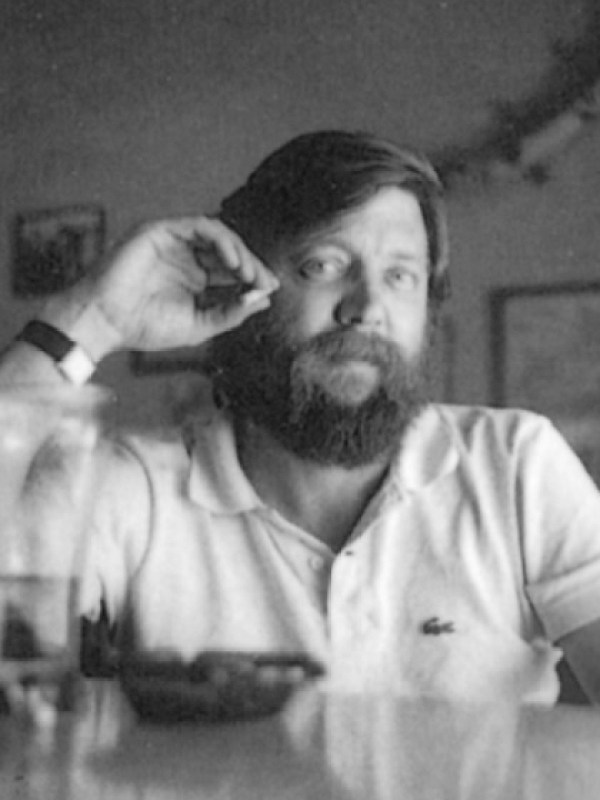Robert Bruce Duncan
Bruce was a longtime Santa Barbara resident who died suddenly of congestive heart failure on August 29th, just days after celebrating his seventy-first birthday.
A bon vivant and a starving artist at the same time, he was an avid reader, subscribed to The New Yorker, and loved to tell a good story. He prided himself on his ability to enjoy life no matter his resources. Long before it became fashionable, Bruce had his photography studio and residence in the funk zone on Gray Avenue.
Gentrification of the funk zone ultimately displaced him, but thanks to a former housemate and longtime friend he landed on his feet in uptown Garden Court on De La Vina Street.
Bruce was the eldest of four children born to Rosemary Hobson Duncan of Ventura and George Perry Duncan of Santa Paula. Both his parents were proud descendants of California pioneers that had crossed the plains in wagon trains and settled in the southern part of Santa Barbara County before it became Ventura County. Bruce was glad to tell you that his great-great-grandfather William Dewey Hobson was known as the father of Ventura County, and he happily celebrated California history as a longtime member of the Platrix #2 Chapter of E Clampus Vitus.
As a child, Bruce traveled and lived in Europe with his family and received his early education in England. This privilege gave him a sense of being a citizen of the world and established an intellectual sophistication that remained an important part of his identity. Returning to the U.S., he developed his sense of independence as a boarding student at the Ojai Valley School. With support from his parents and teachers, young Bruce pursued a wide range of activities, including five that would shape his adult life: literature, photography, camping, fishing, and shooting.
When the Duncans moved to Santa Barbara in 1964, Bruce was sent back east to board at Millbrook School in upstate New York. There, Bruce polished his research, writing and photography skills and developed a network of friendships that would later aid his journalism and authorship. Spending summers at the family beach house on Padaro Lane compensated for the hardships of eastern winters and peaked Bruce’s interest in surfing and the ocean.
Bruce briefly attended UC Berkeley, before returning to Santa Barbara and becoming immersed in surf photography. Some of his earliest professional photography documented the innovative shortboard surfing of Bob McTavish and other Australian surfers in California and Puerto Rico for Surfer Magazine. In 1968, his budding photography career was interrupted by the draft. After a brief stint at Fort Ord, Bruce managed to convince the U.S. Army that he was unsuitable for military life, and he was honorably discharged and returned to Santa Barbara to study at UCSB, where he received a B.A. in English.
In the early 70s, Bruce and similarly artistic friends enjoyed the low rent and great view of Shelby Street in Summerland, becoming regulars at the Nugget despite their long hair. When Bruce moved back to Padaro Lane, he reconnected with the ocean, owned a series of boats, and was briefly a commercial fisherman and licensed 6-pack charter captain. In addition to being a sportsman, he promoted culture in Santa Barbara by facilitating concerts—bringing George Carlin to the Granada—and hosting a local radio show interviewing noted authors.
In the 80s, Bruce was fortunate to marry warm-hearted Susanna, but Bruce couldn’t give up his independence, and their union was short-lived. During this time, Bruce became a regular contributor of photographs and articles to Santa Barbara periodicals including The Weekly, The Independent, and Santa Barbara Magazine. The Mesa Café was a perennial hangout for Bruce, and morning would find him ensconced at his favorite table. For many years, the café walls were covered with his photos of smiling staff and patrons.
Automobiles, woodworking, and classic wooden boats became the focus of his professional photography and writing, published in a variety of national magazines and books. Cutwater: Speedboats and Launches from the Golden Age of Boating combined his text and images in a successful coffee-table book. Bruce enjoyed the challenge of action photography on the water, traveling the country to photograph unique historic boats through a network of proud owners. His images were regularly used in books and calendars focused on classic wooden powerboats.
Bruce also enjoyed photographing people and particularly the female form. His early work for La Belle Modeling Agency partnered him with aspiring models seeking to create distinctive professional portfolios. Much of his later photography was focused on dramatically lit female portraits.
In later years, Bruce worked for a local importer of highly specialized small-caliber target shooting rifles. Not satisfied to simply deal with the abstract machinery, he became an expert. As in photographic work, he was dedicated to his craft, preparing his own shells and driving miles to the range early in the morning to enjoy the best conditions for long-distance shooting. Bruce became a nationally ranked long-distance bench shooting marksman.
Bruce was preceded in death by his mother, father, sister Jane Elyse Duncan and brother Cameron (Ronald). He is survived by brother John Lansing Duncan, half-brother Ian Douglas Duncan, half-sister Malone Duncan Yoh, niece Mary Mackenzie Duncan, and nephew Owen Hopper Duncan. The family wishes to express their gratitude to those who helped Bruce during his illness and facilitated his residence at Garden Court.

